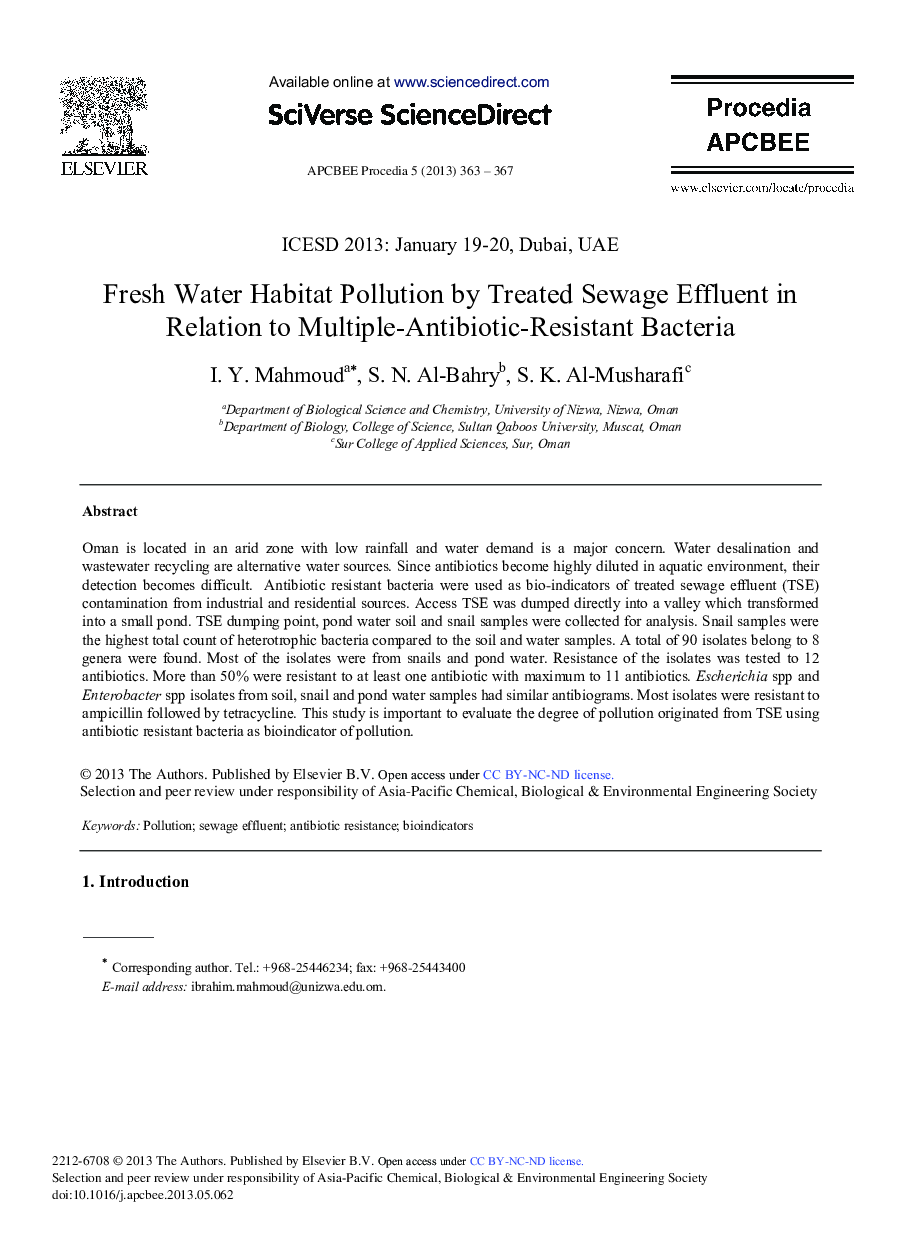| Article ID | Journal | Published Year | Pages | File Type |
|---|---|---|---|---|
| 676614 | APCBEE Procedia | 2013 | 5 Pages |
Oman is located in an arid zone with low rainfall and water demand is a major concern. Water desalination and wastewater recycling are alternative water sources. Since antibiotics become highly diluted in aquatic environment, their detection becomes difficult. Antibiotic resistant bacteria were used as bio-indicators of treated sewage effluent (TSE) contamination from industrial and residential sources. Access TSE was dumped directly into a valley which transformed into a small pond. TSE dumping point, pond water soil and snail samples were collected for analysis. Snail samples were the highest total count of heterotrophic bacteria compared to the soil and water samples. A total of 90 isolates belong to 8 genera were found. Most of the isolates were from snails and pond water. Resistance of the isolates was tested to 12 antibiotics. More than 50% were resistant to at least one antibiotic with maximum to 11 antibiotics. Escherichia spp and Enterobacter spp isolates from soil, snail and pond water samples had similar antibiograms. Most isolates were resistant to ampicillin followed by tetracycline. This study is important to evaluate the degree of pollution originated from TSE using antibiotic resistant bacteria as bioindicator of pollution.
